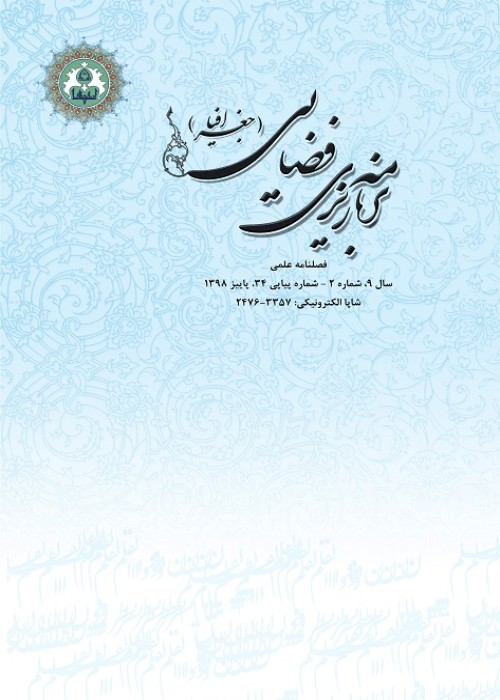Analyzing the Qualitative Content of Spatial Policies of Rural Development in Iran’s Post Islamic Revolution
Author(s):
Article Type:
Research/Original Article (دارای رتبه معتبر)
Abstract:
An integrated approach to the key elements of rural spatial policy-making -including places, people and activities- in the formulation of laws, programs and policies; promotes sustainable rural development. Lack of integrated vision, while having a sectorial approach, in the process of formulating rural development programs in Iran, has caused serious challenge to the sustainable development of these areas. The aim of this paper is analyzing the qualitative content of spatial policies of rural development in Iran. The present paper is a fundamental research in terms of nature; and a developmental research, in terms of purpose. Data analyzing method in this paper is based on qualitative-content-oriented Analysis. Spatial policy subjects, include place-based policies, physical sustainable development, and the institutionalization of sustainable development policies. These categories include 11 indicators (subcategories), constituting the conceptual framework of the research. Qualitative-content Analysis of spatial policies, based on the 11 indicators or sub-categories of the research, 143 codes were obtained, after extracting the unit of meaning, compressing the sentences, and encoding. These codes were categorized in different categories (categories and indicators), respecting their conceptual and thematic relationship. Results showed that of total of 143 codes extracted, the index of planning nature, budgeting, and making Sustainable Development National Strategy, with 21 codes (14.68%) ranked in the first; three indicators of economic dimensions, physical-infrastructural dimensions, and coordination of sectors and Different levels (national and local), ranked the second place with 18 codes (12.58%); and finally the indicator of backwarded-regions protection, with 15 codes (10.48%) ranked the third place. Therefore, the orientation of spatial policies for rural development is towards planning and budgeting factors, physical-infrastructural dimensions, economic, and backwarded regions supporting, while the share of social and environmental factors and the participation of NGOs and the private sector in the formulation of these policies, is little. The Innovational aspect of this paper is its comprehensive analysis of policy-making documents -including five-year development plans, general policies of these plans, general laws and system policies (33 related documents)- using spatial policy indicators.
Keywords:
Language:
Persian
Published:
spatial planing, Volume:9 Issue: 1, 2019
Pages:
1 to 24
magiran.com/p1971425
دانلود و مطالعه متن این مقاله با یکی از روشهای زیر امکان پذیر است:
اشتراک شخصی
با عضویت و پرداخت آنلاین حق اشتراک یکساله به مبلغ 1,390,000ريال میتوانید 70 عنوان مطلب دانلود کنید!
اشتراک سازمانی
به کتابخانه دانشگاه یا محل کار خود پیشنهاد کنید تا اشتراک سازمانی این پایگاه را برای دسترسی نامحدود همه کاربران به متن مطالب تهیه نمایند!
توجه!
- حق عضویت دریافتی صرف حمایت از نشریات عضو و نگهداری، تکمیل و توسعه مگیران میشود.
- پرداخت حق اشتراک و دانلود مقالات اجازه بازنشر آن در سایر رسانههای چاپی و دیجیتال را به کاربر نمیدهد.
In order to view content subscription is required
Personal subscription
Subscribe magiran.com for 70 € euros via PayPal and download 70 articles during a year.
Organization subscription
Please contact us to subscribe your university or library for unlimited access!



